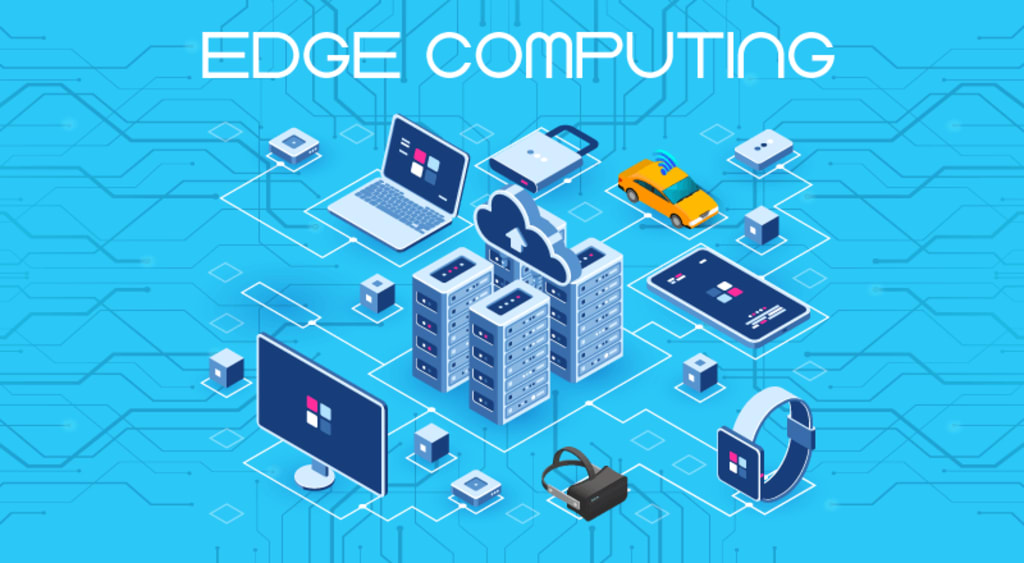
Edge computing refers to the distribution of computing power and data storage away from centralized data centers and closer to the devices and end users that require access to that information. This approach offers several benefits over traditional, centralized computing architectures, including improved performance, reduced latency, and increased reliability and security.
In this article, we will explore the concept of edge computing, its benefits and challenges, and its applications in different industries and scenarios.
What is Edge Computing?
Edge computing is a decentralized computing paradigm that aims to move computing power and data storage closer to the edge of the network, where it can be accessed and processed by devices and end users in real-time. In contrast to traditional centralized computing architectures, edge computing enables data to be processed at the source, rather than being sent to a remote data center for processing.
Benefits of Edge Computing
One of the key benefits of edge computing is improved performance. By processing data closer to the source, edge computing can reduce latency, meaning that data is processed more quickly, and the end user experiences a faster and more responsive system.
Another benefit of edge computing is increased reliability. By distributing computing power and data storage across multiple edge devices, the system becomes less vulnerable to failures, as there is no single point of failure. This makes edge computing particularly suitable for mission-critical applications, where downtime is not an option.
Edge computing also offers increased security. By processing data at the source, sensitive information can be protected from potential cyber attacks, as it is not transmitted over long distances. Additionally, edge devices can be secured and managed more easily, as they are closer to the end user.
Challenges of Edge Computing
Despite the many benefits of edge computing, there are also several challenges that need to be addressed in order to make this approach viable.
One of the key challenges is the management of edge devices. As the number of edge devices increases, it becomes more difficult to manage and maintain them, which can result in higher operational costs.
Another challenge is the lack of standardization. There is currently no widely adopted standard for edge computing, which makes it difficult for different devices and systems to communicate with each other. This can result in compatibility issues and a fragmented market.
Finally, there is the issue of scalability. Edge computing systems need to be able to scale easily as the number of devices and end users grows, otherwise they can become overburdened and inefficient.
Applications of Edge Computing
Edge computing has a wide range of applications, including:
IoT (Internet of Things)
Edge computing is particularly suitable for IoT (Internet of Things) applications, as it enables data to be processed and analyzed in real-time, without the need for a remote data center. This makes edge computing ideal for applications such as smart homes, wearables, and industrial automation.
Video Surveillance
In video surveillance applications, edge computing enables video data to be processed and analyzed locally, rather than being transmitted to a remote data center. This reduces latency, as the video data can be processed in real-time, and increases security, as sensitive video data is not transmitted over long distances.
Healthcare
Edge computing has the potential to revolutionize healthcare, by enabling real-time processing of patient data, such as electrocardiograms (ECGs) and other vital signs. This can lead to improved patient outcomes and faster diagnoses, as data can be processed locally, without the need for a remote data center.
Edge computing can also play a role in the transportation industry, by enabling real-time processing of data from vehicles, such as GPS data, vehicle diagnostics, and passenger information. This can lead to improved safety, as data can be processed and analyzed in real-time, and increased efficiency, as vehicles can be better monitored and managed.
For example, in autonomous vehicles, edge computing can be used to process and analyze sensor data from the vehicle, enabling it to make real-time decisions and respond to changing road conditions. In addition, edge computing can be used to process and analyze data from connected vehicles, enabling fleet managers to better monitor and manage their vehicles, and to make more informed decisions about route planning and maintenance.
Conclusion
In conclusion, edge computing is a decentralized computing paradigm that has the potential to revolutionize the way we process and access data. By moving computing power and data storage closer to the edge of the network, edge computing offers improved performance, reduced latency, increased reliability and security, and a wide range of applications across industries and scenarios.
While there are still challenges to be addressed, such as the management of edge devices and the lack of standardization, edge computing is set to play an increasingly important role in our connected world.
FAQs
What is edge computing?
Edge computing is a decentralized computing paradigm that aims to move computing power and data storage closer to the edge of the network, where it can be accessed and processed by devices and end users in real-time.
What are the benefits of edge computing?
The benefits of edge computing include improved performance, reduced latency, increased reliability and security, and a wide range of applications across industries and scenarios.
What are the challenges of edge computing?
The challenges of edge computing include the management of edge devices, the lack of standardization, and the issue of scalability.
What are some of the applications of edge computing?
Some of the applications of edge computing include IoT, video surveillance, healthcare, and transportation.
About the Creator
Manikandan Raja
Freelancer SEO Expert in Chennai and Bangalore | Freelancer SEO Service Provider in India
Enjoyed the story? Support the Creator.
Subscribe for free to receive all their stories in your feed. You could also pledge your support or give them a one-off tip, letting them know you appreciate their work.






Comments
There are no comments for this story
Be the first to respond and start the conversation.